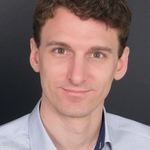Dynamical resonances, also called Pollicott-Ruelle resonances or classical resonances, are a spectral invariant associated with chaotic dynamical systems, formed by a discrete set of complex numbers. For example, if $M$ is a compact Riemannian manifold with negative sectional curvatures, then the geodesic flow $\varphi_t$ on the unit sphere bundle $SM\subset TM$ over $M$ is an example of such a chaotic system. Here chaotic refers to the so-called Anosov property, which says that the subbundle $X^\perp\subset T(SM)$ formed by all vectors that are fiber-wise transverse to the generating vector field $X$ of the geodesic flow splits into a direct sum of two continuous flow-invariant subbundles $E_+$ and $E_-$ on which the derivative $D\varphi_t$ acts exponentially contracting and expanding as $t\to +\infty$, respectively. If $M$ is hyperbolic or, more generally, a Riemannian locally symmetric space of rank $1$, the geodesic flow on the unit sphere bundle over $M$ can be described algebraically in a very convenient way, and the definition and study of dynamical resonances in this setting has been very fruitful in recent years. In particular, the theory has been generalized to convex cocompact hyperbolic manifolds and also to more general non-compact situations. A very recent new direction of research consists in the focus on locally symmetric spaces of higher rank $k>1$, where one studies a multi-temporal flow $\varphi_{t_1,\ldots, t_k}$ with which one would like to associate a multi-dimensional spectrum of dynamical resonances formed by a discrete set in $\mathbb C^k$. So far, this has only been achieved in the cocompact case. A main goal of the project Resonances for non-compact locally symmetric spaces is the generalization to spaces arising from Anosov representations. These spaces lend themselves as promising objects of study due to their good properties regarding compactifications.
Publications
By constructing a non-empty domain of discontinuity in a suitable homogeneous space, we prove that every torsion-free projective Anosov subgroup is the monodromy group of a locally homogeneous contact Axiom A dynamical system with a unique basic hyperbolic set on which the flow is conjugate to the refraction flow of Sambarino. Under the assumption of irreducibility, we utilize the work of Stoyanov to establish spectral estimates for the associated complex Ruelle transfer operators, and by way of corollary: exponential mixing, exponentially decaying error term in the prime orbit theorem, and a spectral gap for the Ruelle zeta function. With no irreducibility assumption, results of Dyatlov-Guillarmou imply the global meromorphic continuation of zeta functions with smooth weights, as well as the existence of a discrete spectrum of Ruelle-Pollicott resonances and (co)-resonant states. We apply our results to space-like geodesic flows for the convex cocompact pseudo-Riemannian manifolds of Danciger-Guéritaud-Kassel, and the Benoist-Hilbert geodesic flow for strictly convex real projective manifolds.
Related project(s):
65Resonances for non-compact locally symmetric spaces
For negatively curved symmetric spaces it is known that the poles of the scattering matrices defined via the standard intertwining operators for the spherical principal representations of the isometry group are either given as poles of the intertwining operators or as quantum resonances, i.e. poles of the meromorphically continued resolvents of the Laplace-Beltrami operator. We extend this result to classical locally symmetric spaces of negative curvature with convex-cocompact fundamental group using results of Bunke and Olbrich. The method of proof forces us to exclude the spectral parameters corresponding to singular Poisson transforms.
Related project(s):
65Resonances for non-compact locally symmetric spaces
We consider a geodesic billiard system consisting of a complete Riemannian manifold and an obstacle submanifold with boundary at which the trajectories of the geodesic flow experience specular reflections. We show that if the geodesic billiard system is hyperbolic on its trapped set and the latter is compact and non-grazing the techniques for open hyperbolic systems developed by Dyatlov and Guillarmou can be applied to a smooth model for the discontinuous flow defined by the non-grazing billiard trajectories. This allows us to obtain a meromorphic resolvent for the generator of the billiard flow. As an application we prove a meromorphic continuation of weighted zeta functions together with explicit residue formulae. In particular, our results apply to scattering by convex obstacles in the Euclidean plane.
| Journal | Ann. Henri Poincaré |
| Publisher | Springer |
| Link to preprint version | |
| Link to published version |
Related project(s):
65Resonances for non-compact locally symmetric spaces
| Journal | Invent. math. |
| Publisher | Springer |
| Link to preprint version | |
| Link to published version |
Related project(s):
65Resonances for non-compact locally symmetric spaces
Team Members
Dr. Benjamin Delarue
Project leader
Universität Paderborn
bdelarue(at)math.upb.de


